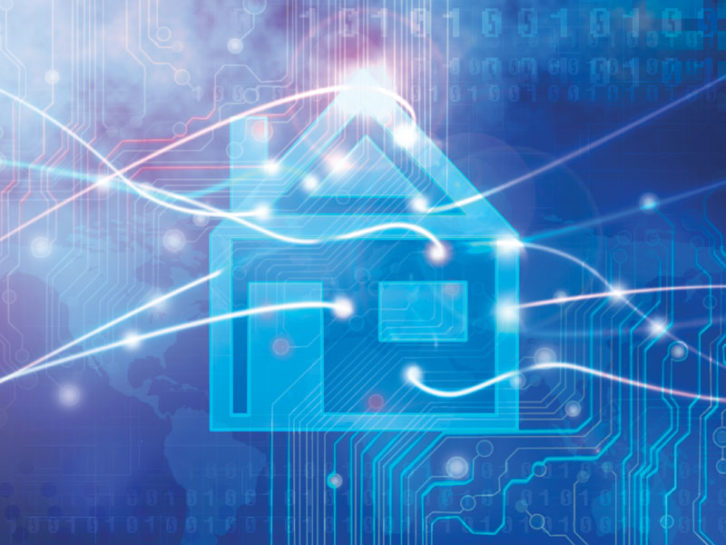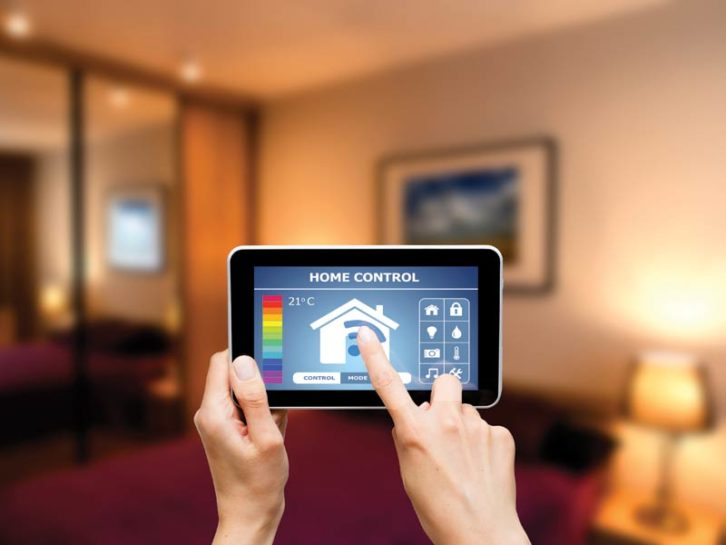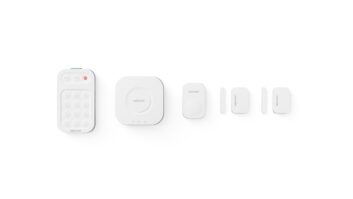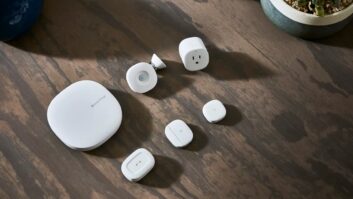 Ever considered a reality where your home doesn’t just exist, but actively participates, learns, and adapts? In this deep dive, you’ll be drawn into an enthralling journey through the fascinating crossroads of the rapid AI evolution and smart home appliances.
Ever considered a reality where your home doesn’t just exist, but actively participates, learns, and adapts? In this deep dive, you’ll be drawn into an enthralling journey through the fascinating crossroads of the rapid AI evolution and smart home appliances.
Move beyond the conventional understanding of smart homes as a network of voice-activated light controls or automated vacuum cleaners. Envision instead a home that intuitively understands your needs, learns from your habits, and evolves continuously to become an active facilitator in managing your day-to-day lifestyle.
Explore how AI’s transformative potential can make your home a dynamic, self-regulating space that perpetually works behind the scenes to streamline your life. It’s not the snippets from science fiction literature anymore; it’s something we’ll all be able to enjoy after coming home from work.
The Origins of the Smart Home: A Quick History
Smart home technology dates back almost 50 years, with the initial concept of wired control modules in the mid-70s kickstarting the advanced wireless and voice-powered technology we see today. So, let’s take a look at the evolution of the smart home, focusing on key events and inventions:
- 1970s – 1975 saw the launch of the X10 communication protocol which made it possible to install control modules that use standard AC wiring to communicate with devices in the home. Unfortunately, this was rather expensive at the time, combined with other issues such as unreliable connections and sometimes slow speeds. As such, the take-up was not significant. However, it helped to pave the way for smart homes of the future.
- 1990s – The popularity of the internet grew significantly in the 1990s, making it possible to advance smart home systems. Despite noticeable improvements from the 70s, 90s smart homes still had many drawbacks such as expensive installation costs, unreliability, and a centralized control that wasn’t intuitive enough.
- 2000s – Advancements in wireless technology, primarily Z-wave and Zigbee, opened new doors in terms of viable smart home solutions. Wireless devices meant that homeowners could create their own DIY smart homes, with peace of mind that Z-wave and Zigbee technology encrypted connections to provide sufficient security. The key obstacle at the time was a lack of compatible devices and systems, hindering the accessibility of the technology.
The Smart Home Today

While accessibility was previously a big issue in terms of smart homes, this is no longer the case, with smart home solutions becoming much more affordable and scalable to suit any size home. Smart homes have become a popular project for DIY enthusiasts, helped by open-source projects like OpenHab, allowing users to set up their systems with minimal knowledge and experience.
Voice control plays a key role in modern smart home technology, allowing users to say simple commands to control devices, lighting systems, sound systems, heating, and practically any other aspect that can be made more convenient.
Although smart home technology is more accessible and affordable than ever, it does face some criticism in terms of possible security risks and a lack of universal standards. The market sees a constant influx of new devices that can be left unsupported by the manufacturer, resulting in out-of-date software that could be targeted by cybercriminals attempting to obtain personal information.
The installation of permanent smart home technology can also have an impact on the property market. As more and more homes become equipped with this level of technology, bridging loan rates for properties are expected to go up, with countries like the UK, where weather necessitates smart indoor climate controls, already seeing a 3-year high-interest rate in Q2 2023.
See also: 3 Smart Home Trends Retailers Should Watch This Year
The Smart Home of Tomorrow: The Potential of AI
AI-powered smart homes ensure devices and systems within a person’s living space work together seamlessly for maximum comfort and convenience. Smart home AI automation can help people improve their daily routines, be more energy efficient, and even become more healthy. Let’s consider some of the key factors why artificial intelligence is becoming an indispensable tool in the modern smart home.
- AI Voice Assistants – such as Google Assistant and Amazon Alexa make it simple to control smart devices by issuing short voice commands. This adds a new dimension of convenience to the home, with no need for numerous remote controls scattered around the house.
- Smarter Energy Management – AI can effectively monitor and analyze energy usage and make optimizations to electricity consumption, heating, and cooling. By making smart adjustments, AI can reduce energy usage to reduce costs while still maintaining comfort within the home.
- Improved Security – Using powerful AI algorithms, smart home security systems can identify unusual behavior and issue real-time alerts to the authorities if there is a suspected break-in. Security can be strengthened further with motion detection systems, biometric technology such as facial recognition, and smart locks that use fingerprint scanning or require a smartphone application.
- A Personalized Home – By integrating smart devices so they work together seamlessly, AI can create a smart home that meets the homeowner’s requirements perfectly. This can include setting alarms and timers to fit a person’s daily schedule or adjusting the thermostat so the house is always at a preferred temperature.
 Smart Home AI Automation: Advantages
Smart Home AI Automation: Advantages
Simply, a smart home isn’t truly a smart home without AI integration, as a great deal of human input is required to constantly adjust settings based on a person’s preferences. AI algorithms can learn and make changes automatically by monitoring how a person uses certain devices, what time they complete tasks when they wake up, and what temperature is deemed comfortable in certain weather.
To better understand the capabilities of AI automation in smart homes, we have broken down its advantages into 4 key areas.
- Energy Efficiency
Energy efficiency is a primary benefit of successfully utilizing AI technology in a smart home. As well as reducing energy bills, households can also play their part in reducing their carbon footprint. This is achieved by AI learning from the user’s daily routines, analyzing the data collected by sensors, and using this information to make decisions on how best to optimize energy usage.
Based on the user’s actions and preferences, AI can intelligently adjust the lighting and heating to ideal levels, while also choosing which devices should be switched off or left on standby. Statistics show that AI-powered thermostats can help homeowners save between 10-15% on their energy bills.
For added insights, AI can even generate reports with C++ or other programming languages to produce easy-to-read analytics about how the home consumes energy daily. Of course, this requires standardization between manufacturers, which is a tall task for even the biggest brands in the industry.
2. Security
The advanced security features provided by an AI-controlled smart home provide a safer environment for the family. Through a combination of cameras, smart sensors, and algorithms that are designed to detect unusual behavior, homes are safer than ever. Alerts can be sent if there is a suspected intrusion and homeowners can quickly check cameras remotely via their smartphone – allowing for instant action to be taken.
Intelligent surveillance systems are revolutionizing the world of home security, with AI easily able to differentiate between humans and animals, and facial recognition can even identify regular visitors to make informed decisions.
3. Automate Daily Tasks
Daily tasks can be streamlined and automated to save people time, creating a home that revolves around the owner. AI systems allow devices to communicate with each other efficiently, with voice commands and integrated smartphone apps giving the user full control.
Homeowners can play music or switch on the TV with a simple voice command, and perform hands-free cooking while in another room, and AI can switch on the lighting and heating, ready for when the household wakes up in the morning. There is even the option to connect a virtual debit card to a smart kitchen and have it restock the pantry completely autonomously, using ML to learn everything there is to know about the family’s dietary habits.
4. Predictive Maintenance
All technology can wear down and witness a drop in performance over time, however, any issues can be avoided by proactive maintenance. AI algorithms can detect when a smart device may be suffering from wear and tear or if it stopped being energy efficient due to a fault. By alerting homeowners of these issues, they choose to preemptively repair a device to avoid any long-term damage.
Over time, this predictive maintenance can result in significant savings in terms of both cost and money, ensuring expensive devices do not need to be replaced for many years.
Conclusion
Smart home technology has effectively integrated AI algorithms to provide the best possible user experience. These algorithms can manage daily energy usage and make adjustments that can reduce energy bills. Predictive maintenance can extend the lifespan of smart devices, while home security is boosted with smart surveillance, sensors, and intrusion detection.
Furthermore, smart homes have become more accessible than ever, with the technology becoming much more affordable and do not require professional installation. Over the next few years, almost every home in the US may feature at least some form of smart home technology.
See also: Addressing Consumers’ Cybersecurity Concerns Around The Smart Home













